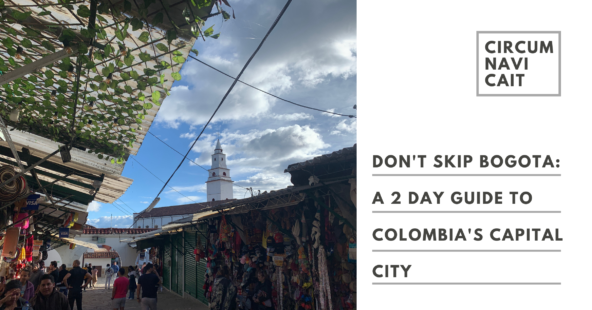Don’t Skip Bogota: A 2 Day Guide to Colombia’s Capital City
Before I embark on any trip, I probably read dozens of blog posts to plan the best overall itinerary and decide what to do in each place I visit in a given country. When preparing for a two-week trip to Colombia, many travel bloggers seemed to agree on one thing: they were underwhelmed by Bogotá.
Despite this common opinion, my flight from the U.S. was to Bogotá and I decided to spend two full days exploring the city. I’m writing this post mere hours after leaving the city for Medellin, so other cities may blow Bogotá out of the water. But, I personally really liked Bogotá and found that it had plenty to keep a traveler busy for a couple of days or more.
Here’s my two day guide to Bogotá as well as some of my personal experiences, as always.
Some of the Basics
Currency
The Colombian Peso
At the time of writing (Sept 2022), $1 USD = roughly 4,500 pesos. Not a super easy conversion, but fortunately prices tend to be pretty cheap so when in doubt hand over a slightly bigger bill and hope for the best!
Language
¡Español!
Fortunately for me, I spent a year living and studying in Costa Rica and a few months doing the same in Spain, so although my skills are a bit rusty, I can speak Spanish. This is very handy in Colombia because while a lot of people who work in tourism speak at least some English, this is not a given.
When traveling to any country, it’s best to know at least the basics.
Hello – Hola
How are you? – Cómo estás?
Good morning – Buenos días
Good afternoon – Buenas tardes
Good night – Buenas noches
Thank you – gracias / muchas gracias
Weather and Altitude
While Colombia is pretty close to the equator, Bogotá is quite chilly due to its high elevation. When I visited in September of 2022, it was around 55 degrees Fahrenheit / 15 degrees Celsius each day. Bogotá’s weather can also be very unpredictable – the sun out one minute and a torrential downpour the next, so it’s best to wear layers and make sure you have sunscreen and an umbrella or rain jacket with you whenever you’re out and about.
Bogotá is at almost 3,000 feet above sea level – an altitude that many are not used to. Especially if you’re flying directly into Bogotá, pace yourself over the first day or two and drink lots of water as you’ll likely be more tired than usual. Keep in mind that the altitude can also affect your body’s ability to metabolize alcohol, so you may begin feeling its effects faster than usual.
Getting There
I decided to go to Colombia thanks to an amazing flight deal from Scott’s Cheap Flights. SCF is a subscription service that sends you frequent emails with flight deals to destinations around the world. I booked an astounding $300 roundtrip deal from Charlotte to Tokyo back in 2020, but wasn’t able to go due to the pandemic. However, when the $318 roundtrip flight deal from Charlotte to Bogotá showed up in my inbox, I quickly leapt on the deal. If you’re interested in receiving flight deals, you can sign up for Scott’s Cheap Flights’ free subscription to try it out and then upgrade to their $49/year once you get addicted ;-).
I completed by MA in Media Practice for Development and Social Change at the University of Sussex on September 6th and set off for Colombia 4 days later to celebrate!
I flew from Charlotte to Miami, and then from there, it was only a 3.5 hour flight to Bogotá. It was refreshing to land in a new city in the early afternoon blissfully free from jet lag as Colombia is only one hour behind the East Coast of the U.S.
Getting to the City from the Airport (and vice versa)
After going through customs in the El Dorado Airport, I booked an Uber to my hostel for 31,200 Colombian pesos (about $7 USD). This 30-minute Uber was an absolutely wild ride – I was instantly reminded of what driving in Latin America was like. My driver swerved around and blew through lights and stop signs while on his phone the entire time. Despite the somewhat harrowing ride, I did arrive safely to my hostel in La Candelaria – the colonial area of Bogotá most frequented by tourists.
To get back to the airport, my lovely hostel owner booked me a taxi. It is not recommended to take an Uber to the airport because they are technically illegal in Colombia and Ubers cannot access the airport and have been known to drop tourists off on the road near the airport. Fortunately, the taxi only cost a bit more – I paid 42,000 pesos (about $9.50 USD).
There is a bus system in Bogotá that some of my hostel-mates used to get to the Candelaria area from the airport, but it took them an hour and a half or more on 3 crowded buses.
Where to Stay
Generally, I recommend staying in the Candelaria area of the city. This is the ‘old town’ of Bogotá where all of the colonial-style buildings, the main square, and the museums are located. The city is absolutely massive, so staying in this area will put you within walking distance to most places to visit in the city.
If you’re a budget traveler like me, I recommend staying at Cedron Hostel. It is located on a nice, quiet street of the Candelaria and is run by the sweetest Colombian couple, Gabriel and Patricia. They don’t speak much English, but they are so happy to help you with anything you may need. The hostel has that rare, special quality of being social without being a party hostel. Each morning I gathered with other guests for a complimentary breakfast of fresh fruit and toast with homemade jam that Patricia made herself. Each night, I enjoyed chatting with Gabriel, Patricia, and others about our days and about different aspects of Colombian culture.
A dorm bed only cost 32,000 pesos (about $7.25 USD) a night, which you can’t really beat.
Safety
Before I left for my trip, a lot of people told me to be safe without telling me to also have fun. I am fully aware that Colombia has a bad reputation, and largely for good reason, but in the past decade the country has really transformed and has truly become a backpacker haven.
Like in any city, it is important to be aware of your surroundings, take extra care with your belongings, and don’t walk around on your own late at night. If you keep these things in mind in Bogotá, you shouldn’t have any issues. I never once felt unsafe during my time there.
Things to Do
I did all of these things over two full days in Bogotá, but I was moving at a pretty quick pace. You could easily take things a bit slower and do things over a third day.
A Free Walking Tour of the City
If you’ve followed my travels at all, you’ll know that I love to do a walking tour of a new city on my first day so I can get my bearings, learn about the city and its history, and get recommendations for what else to do while I’m there. On my first full morning in Bogotá, I did a free walking tour with Beyond Colombia. My guide, Camilo, took us around downtown Bogotá and the Candelaria for 2.5 hours, and did a great job telling us about the good and bad history of the city as well as what the city is like now.
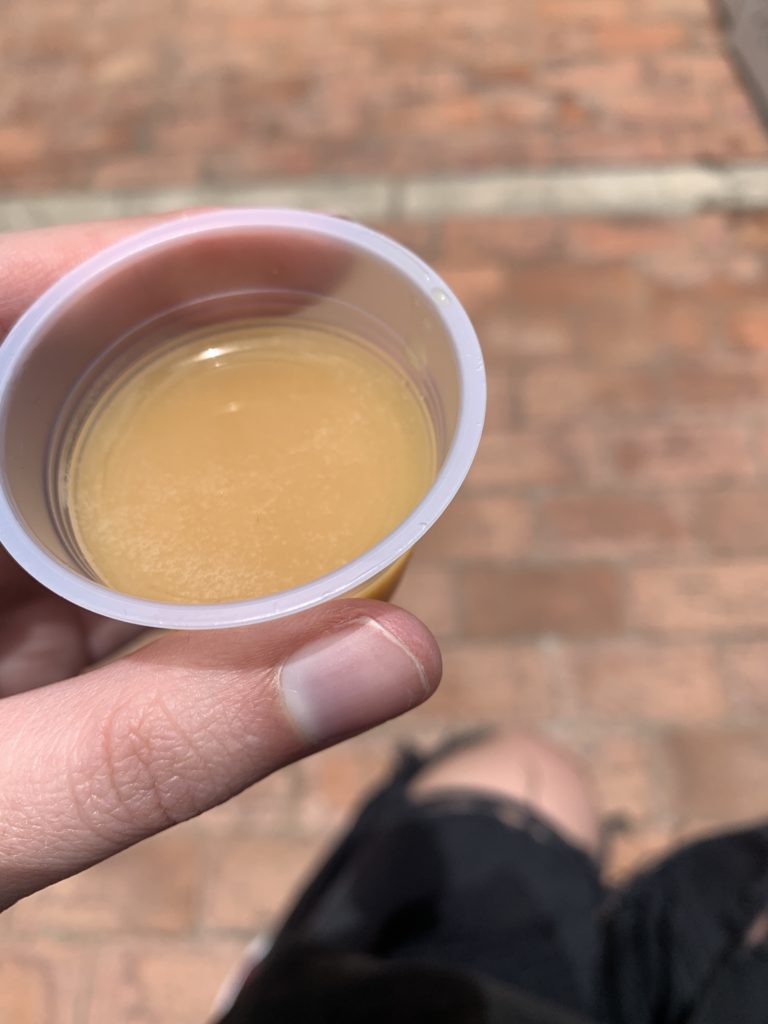
We also stopped by the Concordia Market to try chicha, a fermented corn drink created by Indigenous peoples hundreds of years ago. There’s an area of the Candelaria near the market where several vendors are selling this traditional drink in its original form and in various flavors. It’s not for me, but I really enjoyed trying it on the tour.
As with most ‘free’ walking tours, it’s customary to tip your guide at the end. The amount is entirely up to you, but I usually tip the equivalent of $10 USD or a bit more if I felt my guide was really great.
The Gold Museum
The Gold Museum is one of Bogotá’s biggest attractions, and for good reason. The museum has thousands of gold artifacts displayed in beautiful and informative ways. You’ll also be able to learn more about how the region’s gold helped to inspire the legend of El Dorado.
I visited the museum on a Sunday when admission to the museum is free. The museum was a bit crowded, but it was lovely to see so many Colombians taking advantage of the free access and enjoying the museum.
The museum is open from 9 am to 6 pm from Tuesday to Saturday and from 10 am to 4 pm on Sundays. Regular admission is 4,000 pesos (about $0.90 USD), so even if you don’t visit on Sunday the cost to visit is very affordable and well worth the cost.
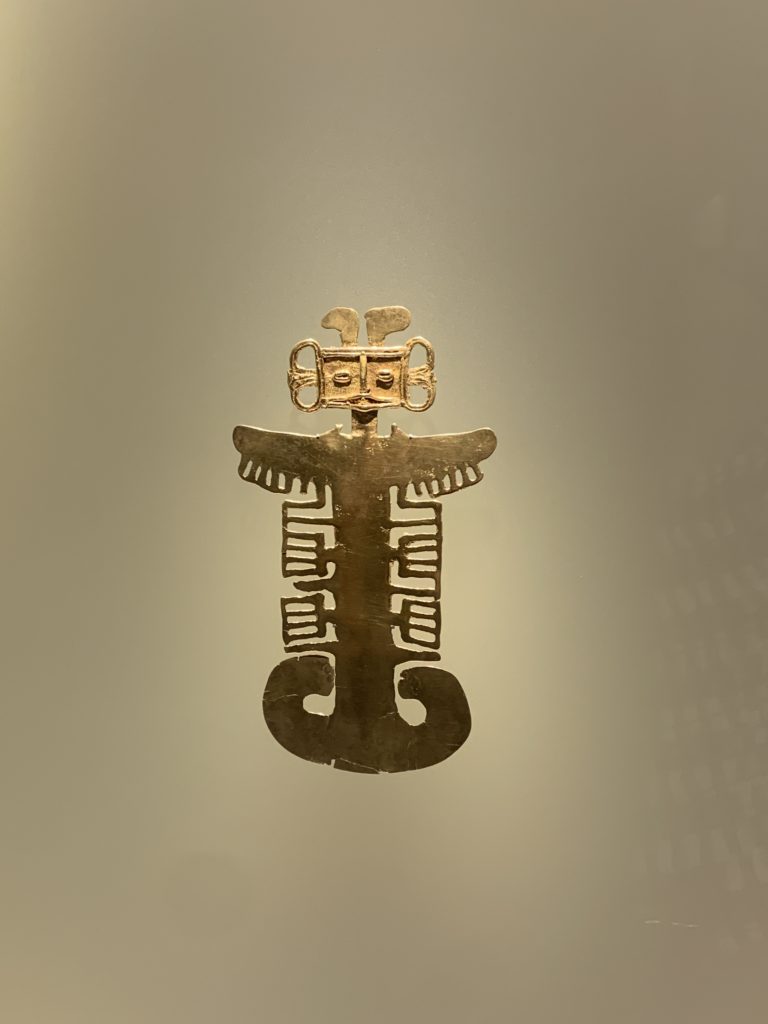
Eat at La Puerta Falsa
La Puerta Falsa is the oldest restaurant in Bogotá and has been serving tamales for over 200 years. It gets its name, ‘The False Door’ because it is directly across from a wall of the cathedral where there was a side door where people snuck out during long services.
My walking tour guide recommended that we go there for lunch and order ajiaco – a local soup made from 3 different types of potatoes, chicken, corn, cream, avocado, and more. You can also order ‘chocolate completo’ there – this is a hot chocolate drink made ‘complete’ with cheese. Yes, cheese. You’re supposed to cut the block of soft, white cheese into blocks, drop it into the hot chocolate, and then drink the melted cheese and chocolate mixture. It was a little weird, but very Colombian as they really seem to love cheese with everything.
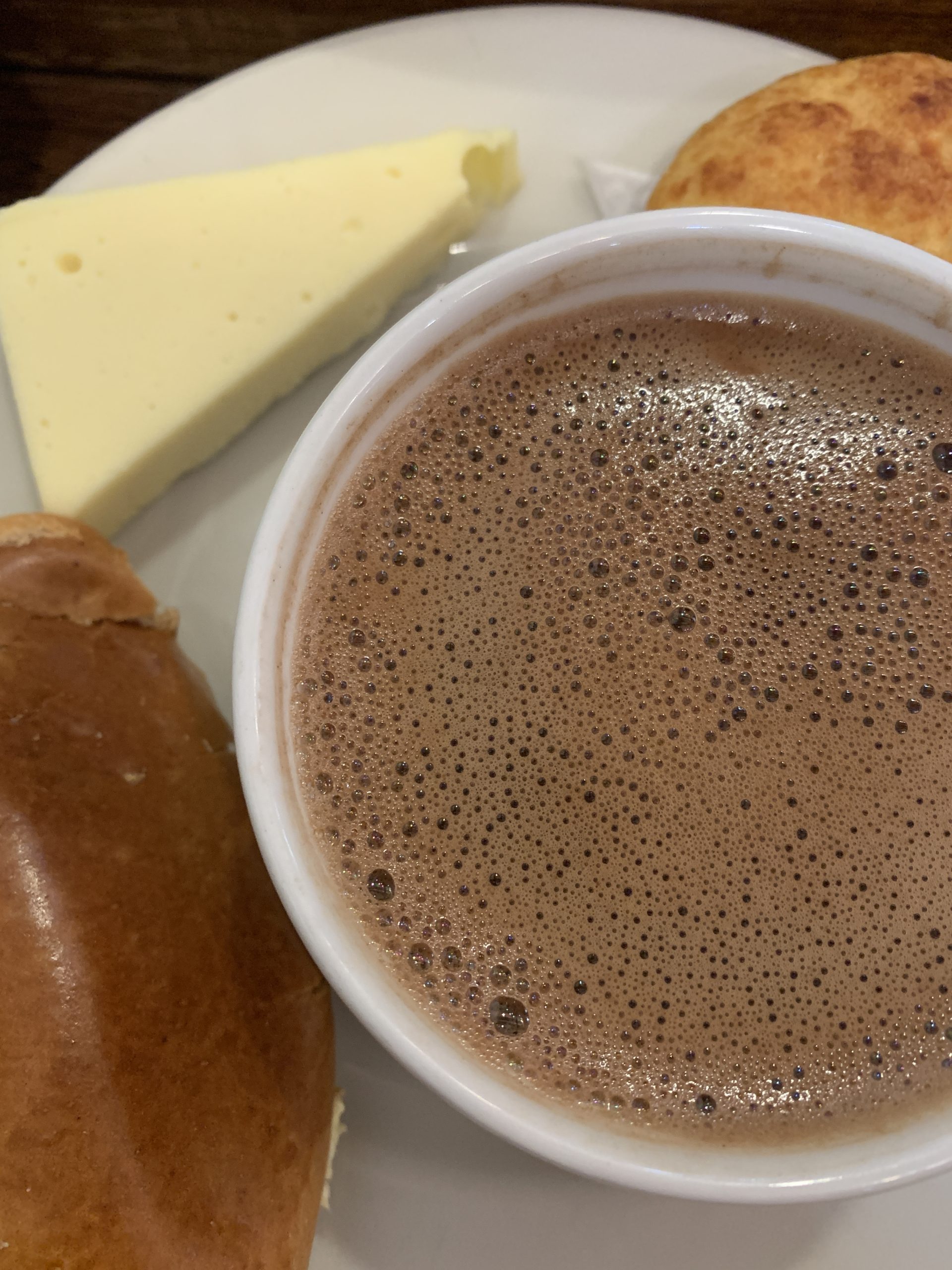
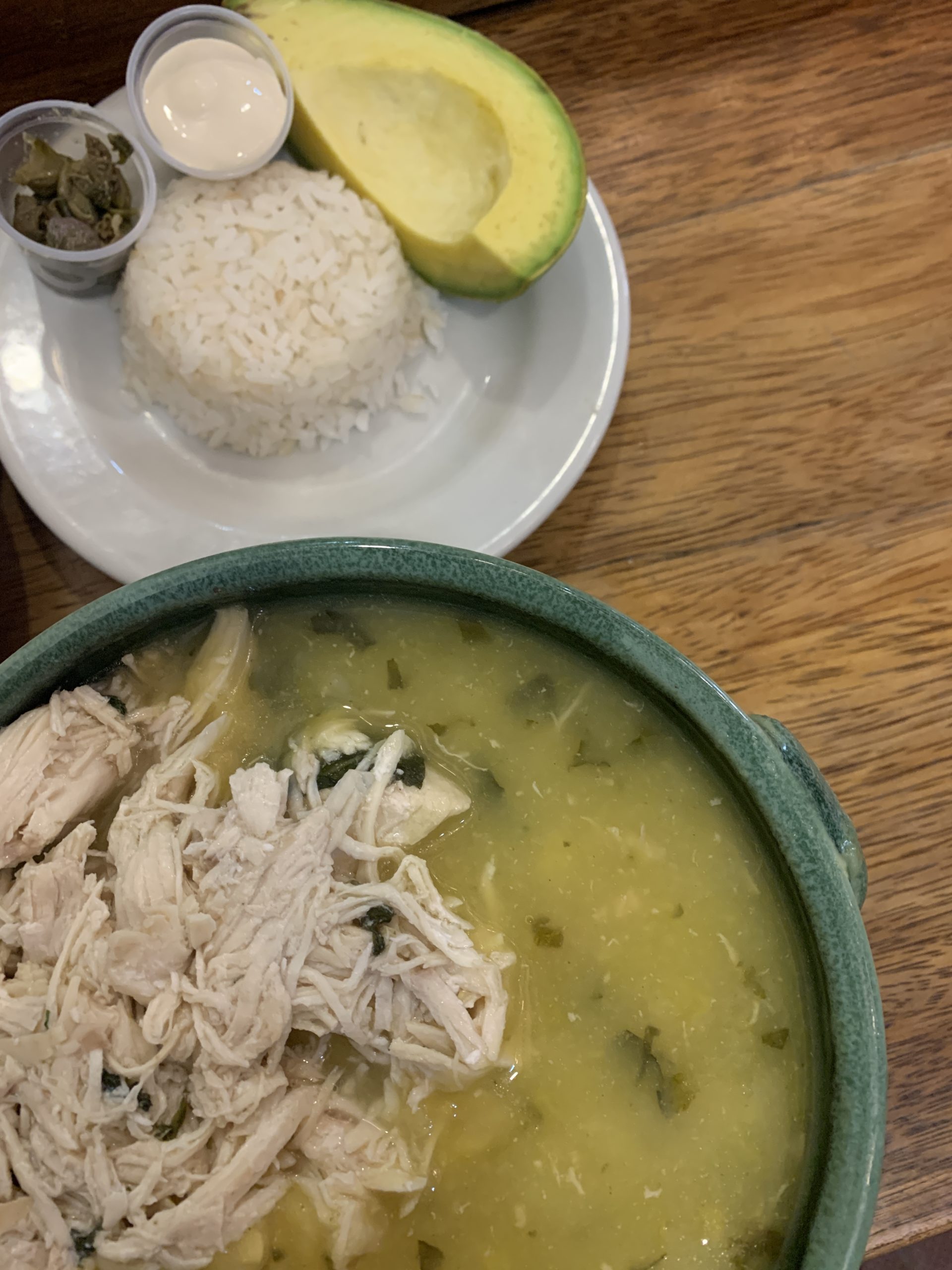
The ajiaco soup was very good and was absolutely huge. If you go with someone else you can definitely share. My only warnings about La Puerta Falsa is that they only accept cash and that it’s super tiny and very popular, so it’s best to go during off times.
Go Up to Monserrate
One of the first things you’ll notice when you arrive in Bogotá is that it is surrounded by mountains. One of the peaks looming over the city is Monserrate, and you can go to the top for amazing views of the city. If you’re up for the challenge, you can hike up to the top. I’ve heard and read that it takes people an hour or so to climb the many stairs to the top. If you choose this route, it’s best to start in the morning as the trail will be well lit, there are guards near the starting point, and it’s less likely to be raining in the morning.
If you’re like me, and a hike straight up a mountain at a very high altitude doesn’t sound fun, then you can take the cable car or the funicular up to the top. Both are located in the same area and cost the same thing, so you can choose which one to take based on the lines or what you prefer.
The cable car is open from 12 pm to 11:30 pm Monday to Saturday and from 10 am to 4:30 pm on Sundays.
The funicular is open from 6:30 am to 11:45 am Monday to Saturday and from 5:30 am to 5:30 pm on Sundays.
They both cost 14,000 pesos ($3.20 USD) one way and 23,500 pesos ($5.30 USD) roundtrip.
On Sundays the tickets are a bit cheaper – 8,000 pesos ($1.80 USD) one way and 14,000 pesos ($3.20 USD) roundtrip. HOWEVER, do not be tempted by the cheaper prices. I went up on a Sunday and went up with seemingly all of Bogotá. There is a church at the top, and many people go up for services or to simply have a day out with the family. It only took me about 30 minutes to get my ticket and get to the top on the funicular, but it took me nearly 2 hours to get back down.
I went on Sunday because it was the only day of my trip where the weather was really nice and clear, but I absolutely would not recommend going up on a Sunday.
At the top, you can enjoy the views, go into the church, and grab a snack/drink/meal from one of the many vendors.
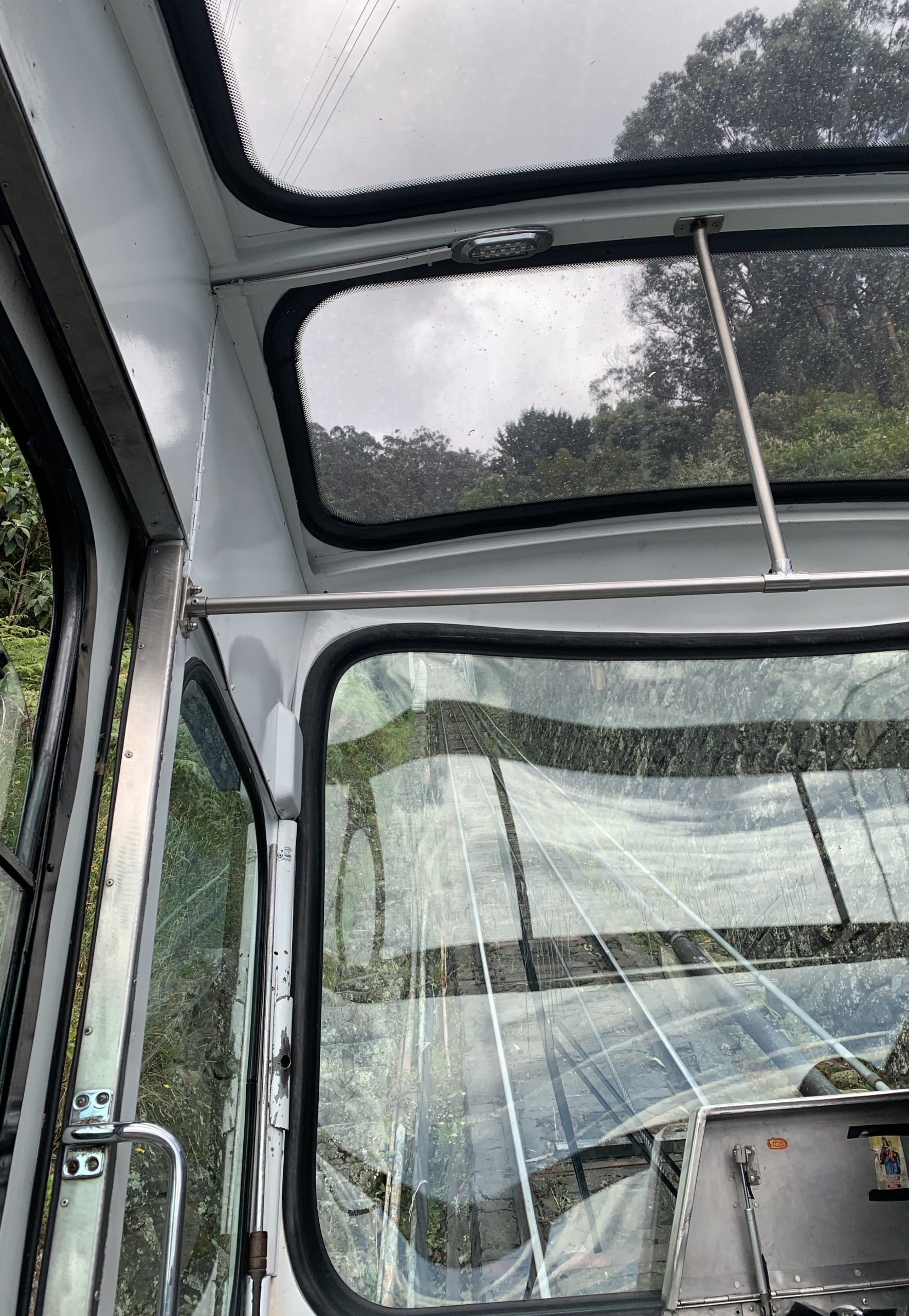
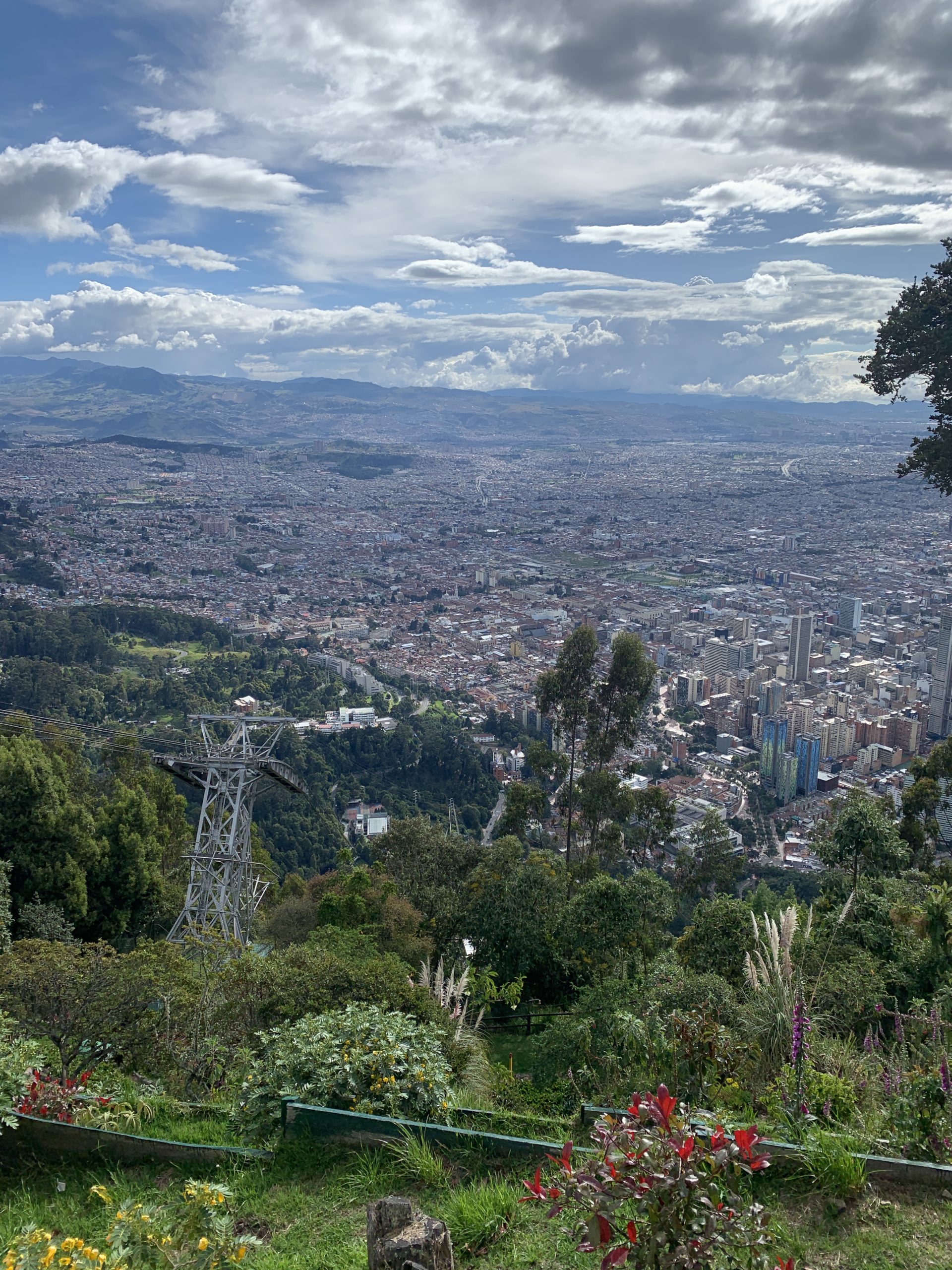
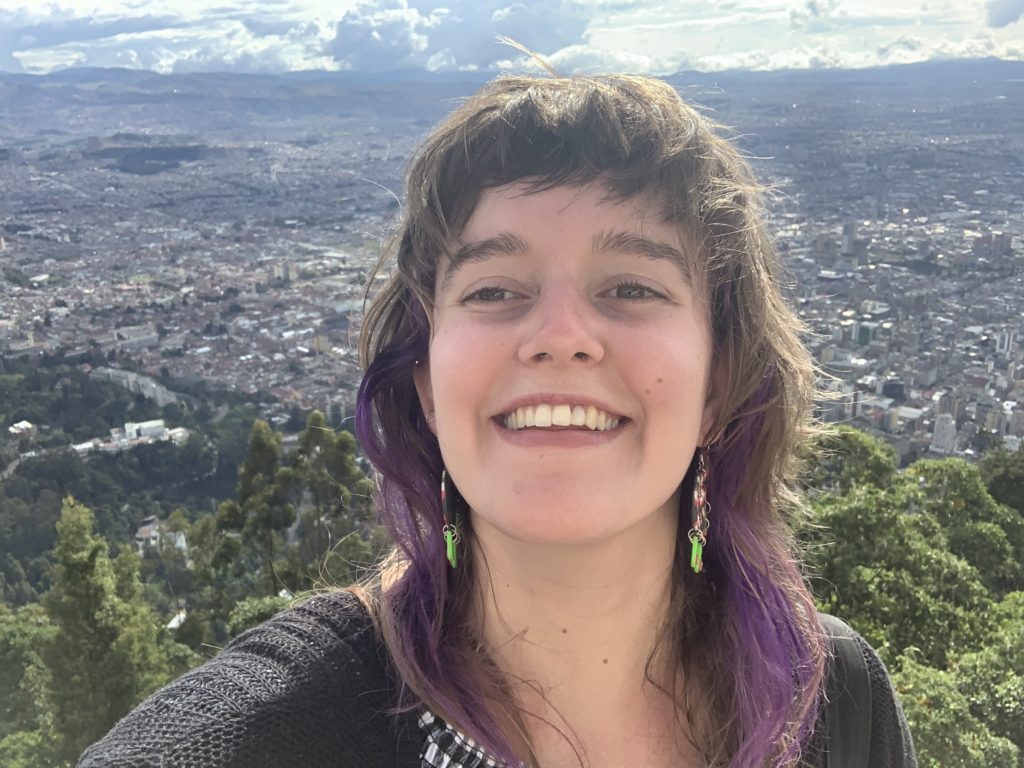
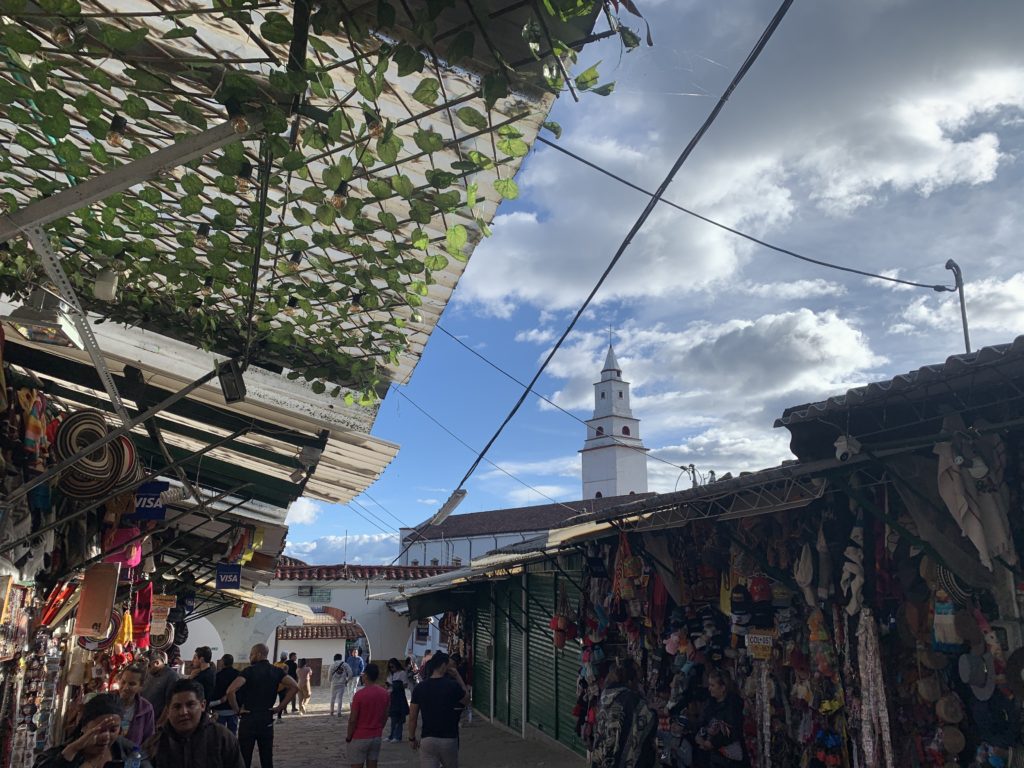
Take a Fruit Tour of a Local Market
I am not exaggerating when I say that the fruit tour of the Paloquemao market is the best tour I have ever been on. A couple of blogs I read mentioned this amazing tour through Airbnb experiences, and after reading some of the hundreds of absolutely glowing reviews, I decided to book it.
The Paloquemao is a sprawling indoor market located about a 15-minute drive from the Candelaria. This market is super local, and I definitely would not have known where to start if I didn’t have my incredible guide, Victor. Over 3 hours, I tried 25 fruits, 2 fresh juices, a chocolate drink called chucula, a fresh-baked pastry with guava paste and cheese, and 2 smoothies. Victor gave me the background of each fruit, shared what they’re often used for, and chatted with so many vendors that he had clearly built strong relationships with.



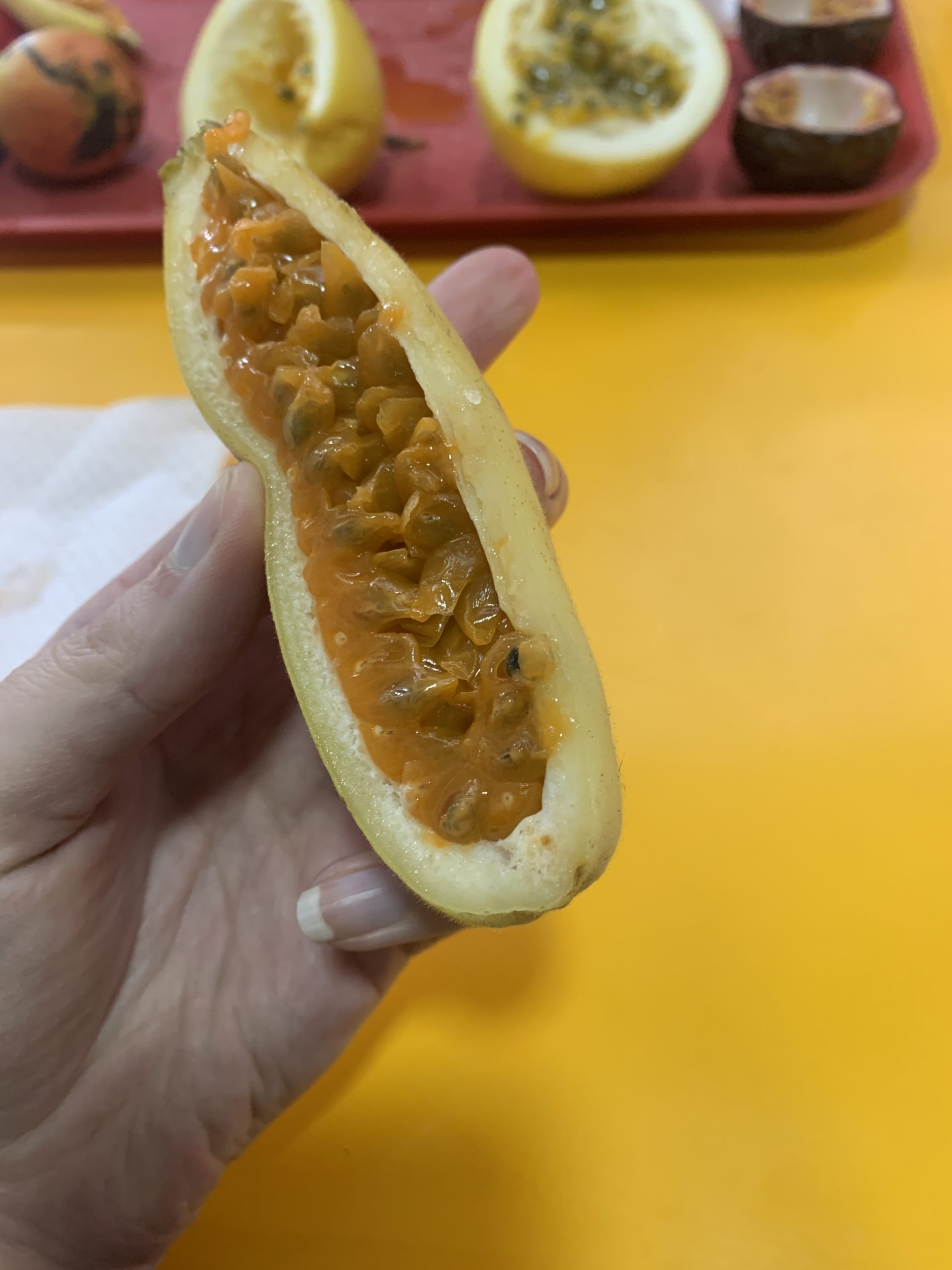
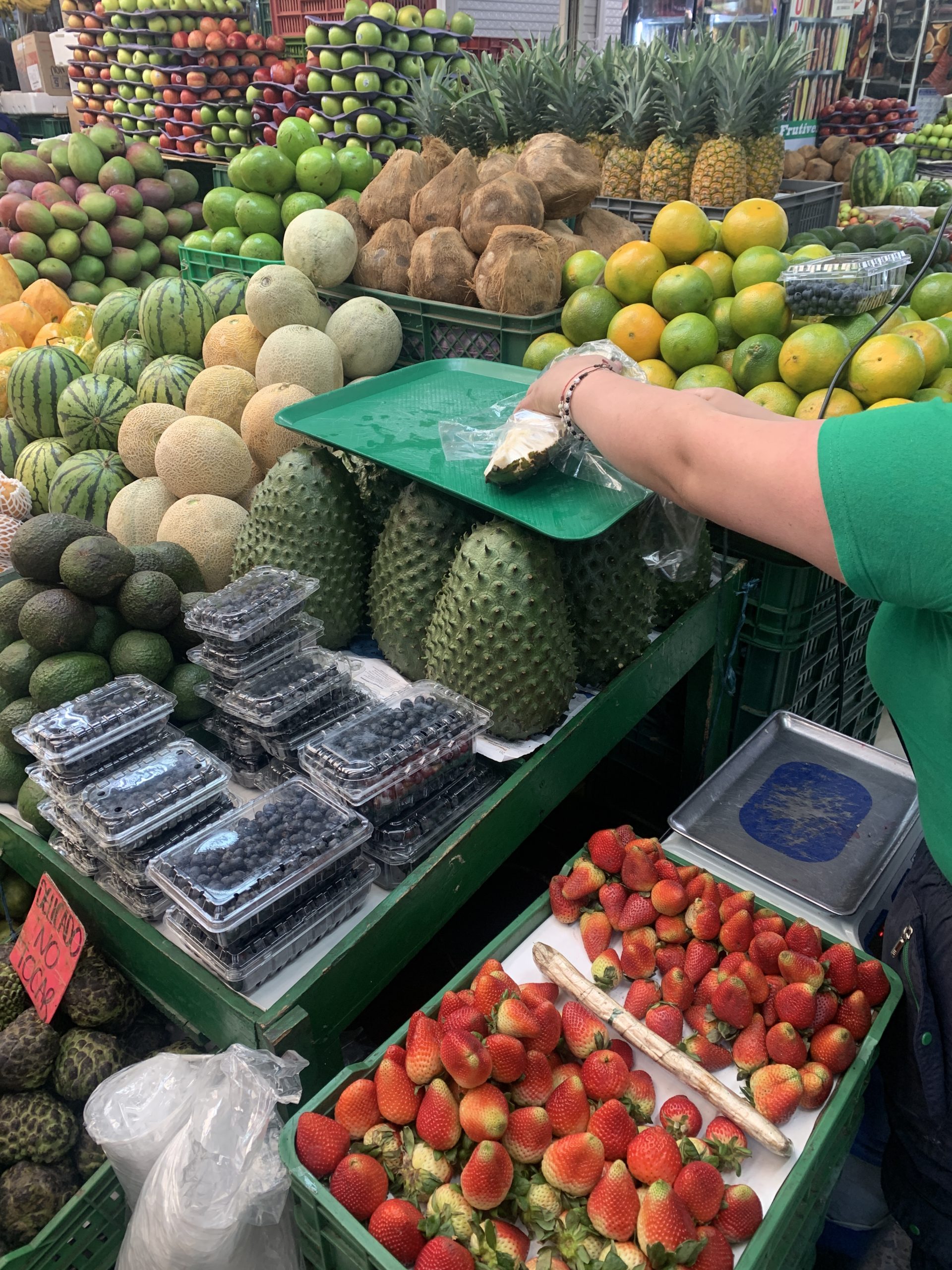

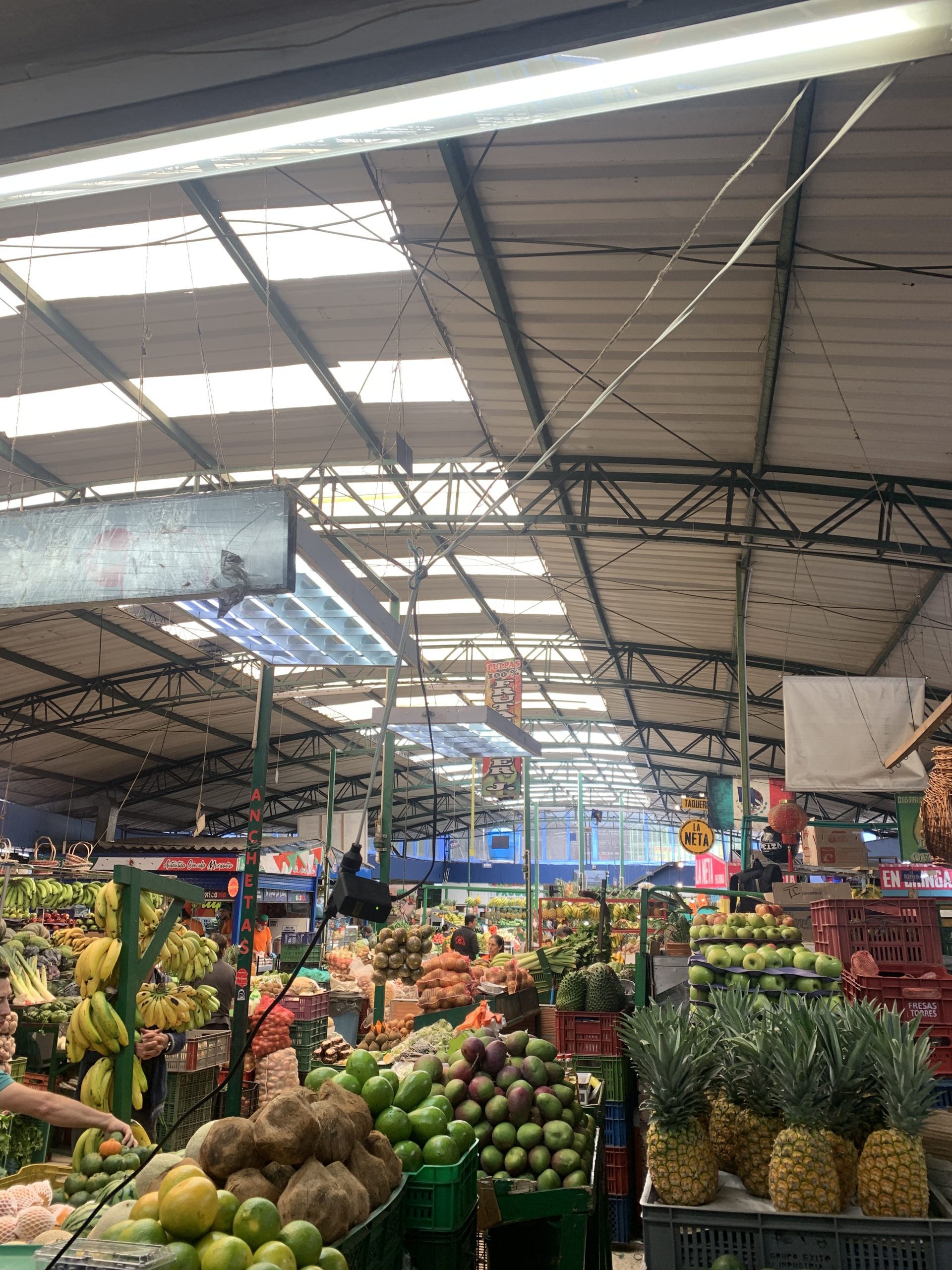





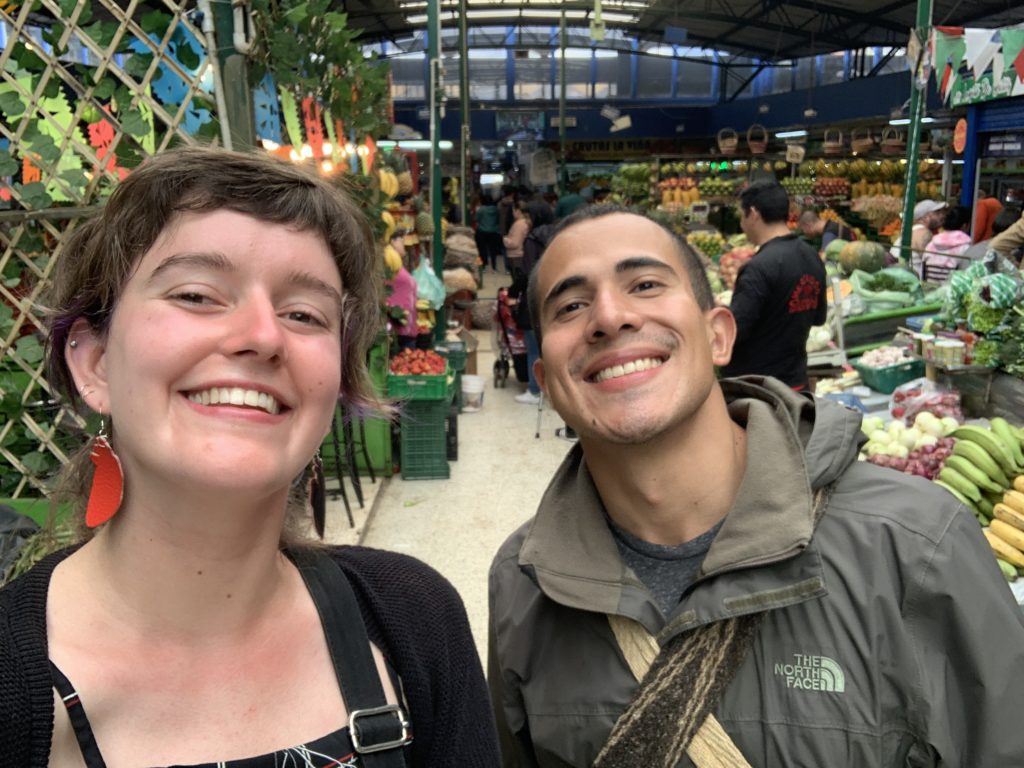
Other people who had booked on the tour cancelled last minute, so I had a private tour and really enjoyed chatting with Victor about the market, his English studies in England, and the mixology experiences he creates with these fruits for the U.S. embassy.
I typically don’t choose a lot of paid tours like this, but it was worth every penny. A huge thank you to the Sound Defense Alliance who surprised me with an Airbnb gift card for my trip as thanks for producing their podcast.
The Botero Museum
Fernando Botero is a famous Colombian artist with a very distinct style who donated his private collection to Bogotá with the condition that people would be able to see the pieces for free. So, in Bogotá you can visit the Botero Museum and see a pretty large collection of his paintings and sculptures as well as some pieces by other well-known artists such as Picasso, Dalí, and Monet. It is definitely worth a visit.
The museum hours are 9 am to 7 pm Monday and Wednesday through Saturday and 10 am to 5 pm on Sundays.
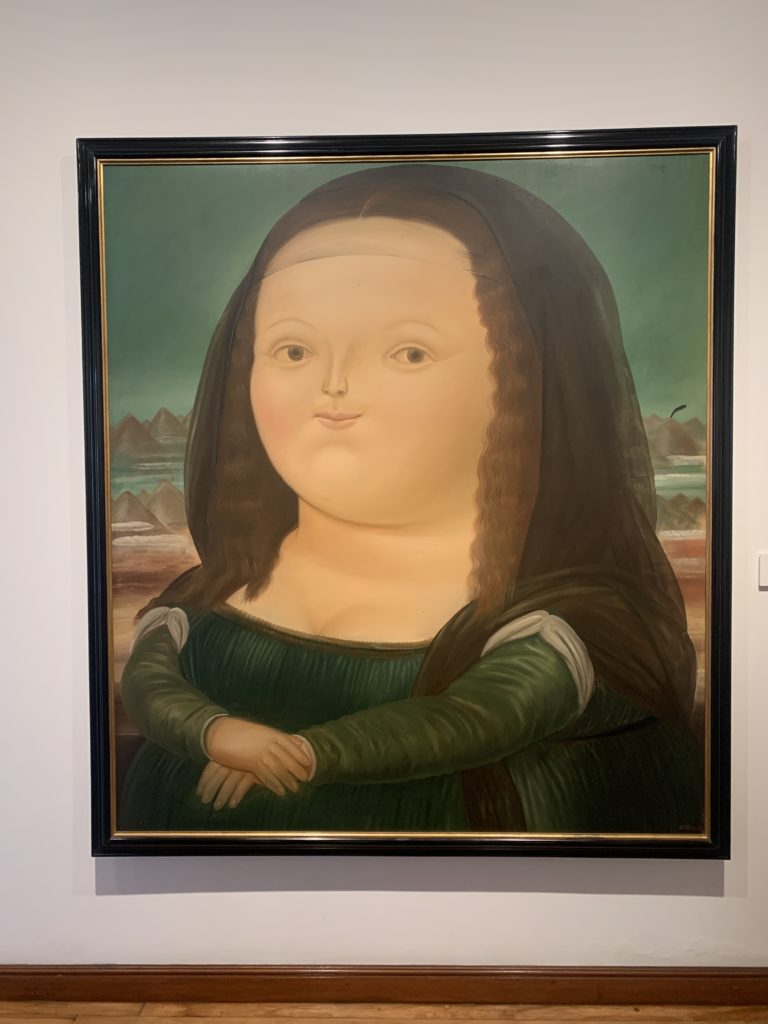
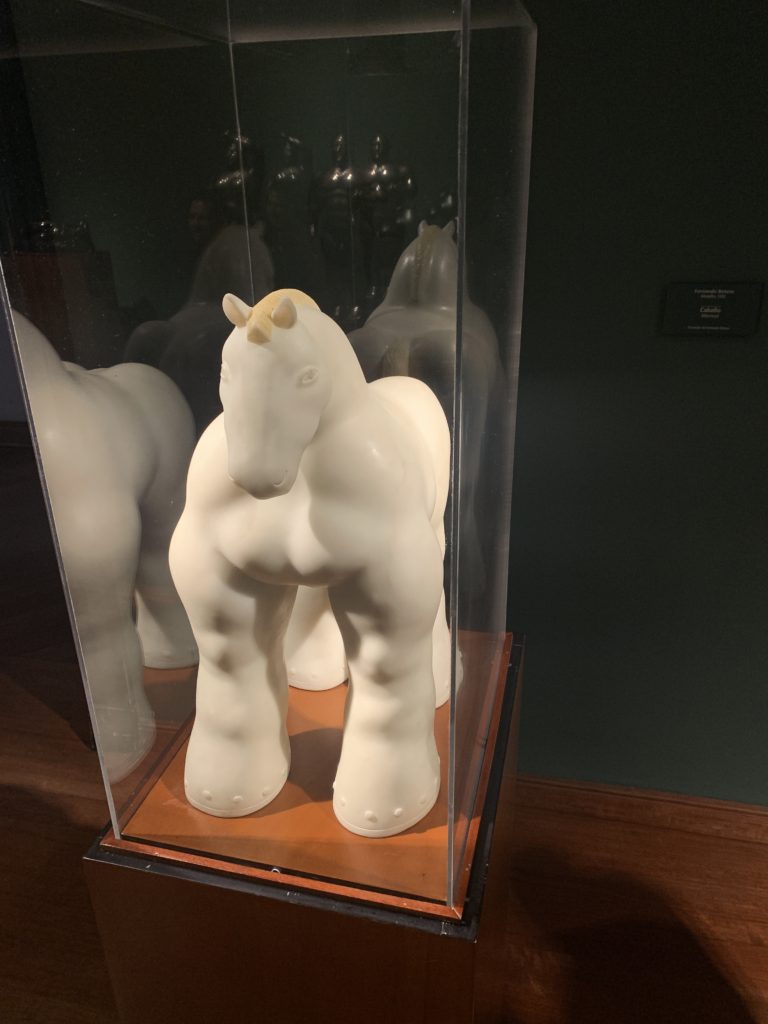
Go on a Free Graffiti Tour
Yes, another tour. What can I say? I love tours. I also love art, so when I had some extra free time, I decided to join Capital Graffiti Tours’ free walking tour. They have the tour each day at 10 am and 2 pm, and they are led by artists or organizers who work to promote graffiti art.
You’ll see pretty soon upon arriving in Bogotá that the city is absolutely covered in graffiti art. There was an explosion of graffiti after the police killed a 16-year-old boy doing graffiti in 2011 and tried to frame him for a robbery by planting a weapon. Now, Bogotá is the only city in the world where it is required by law that the city invest money into street art. As a result, the city is very colorful and has a lot of amazing pieces.
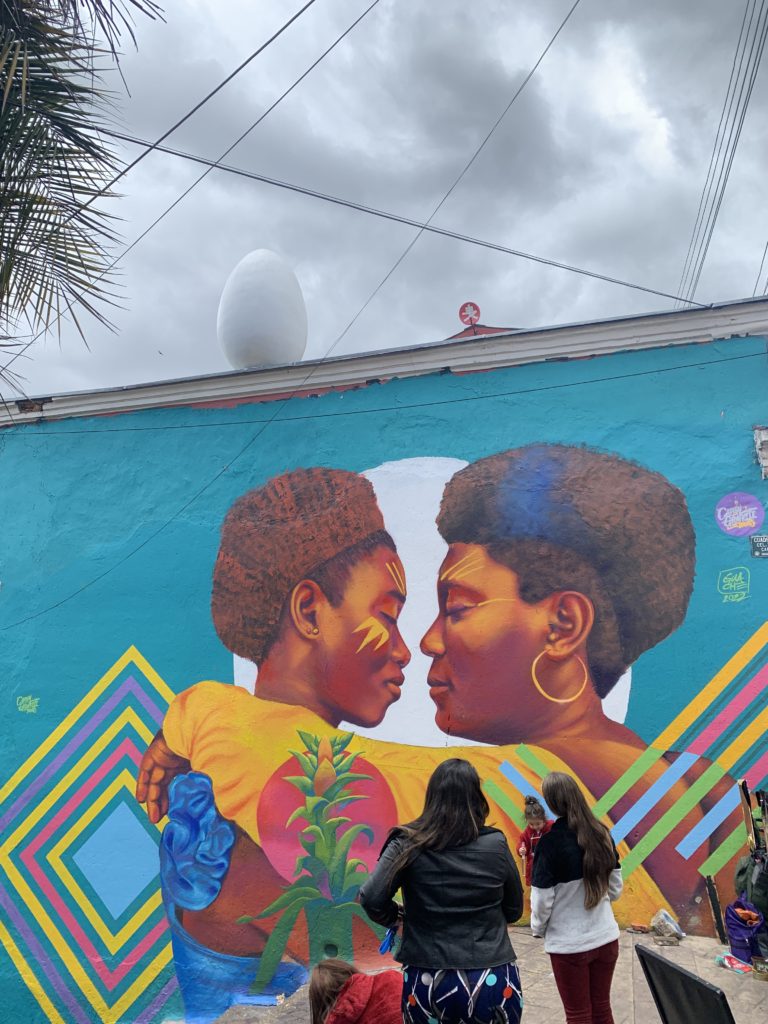
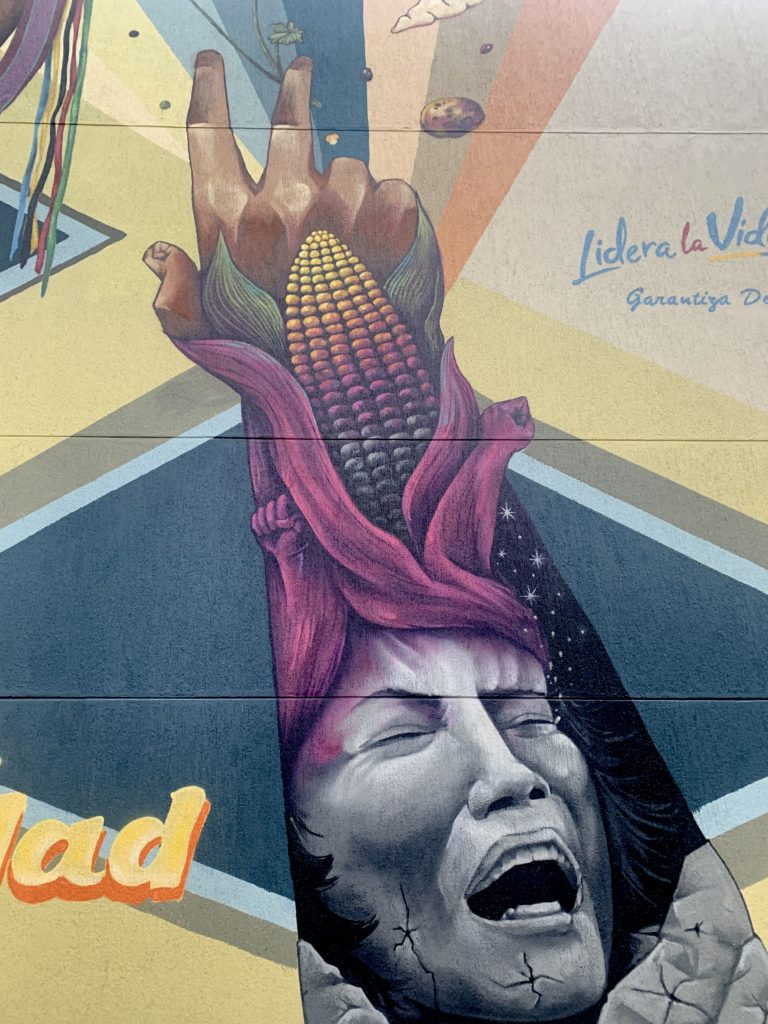
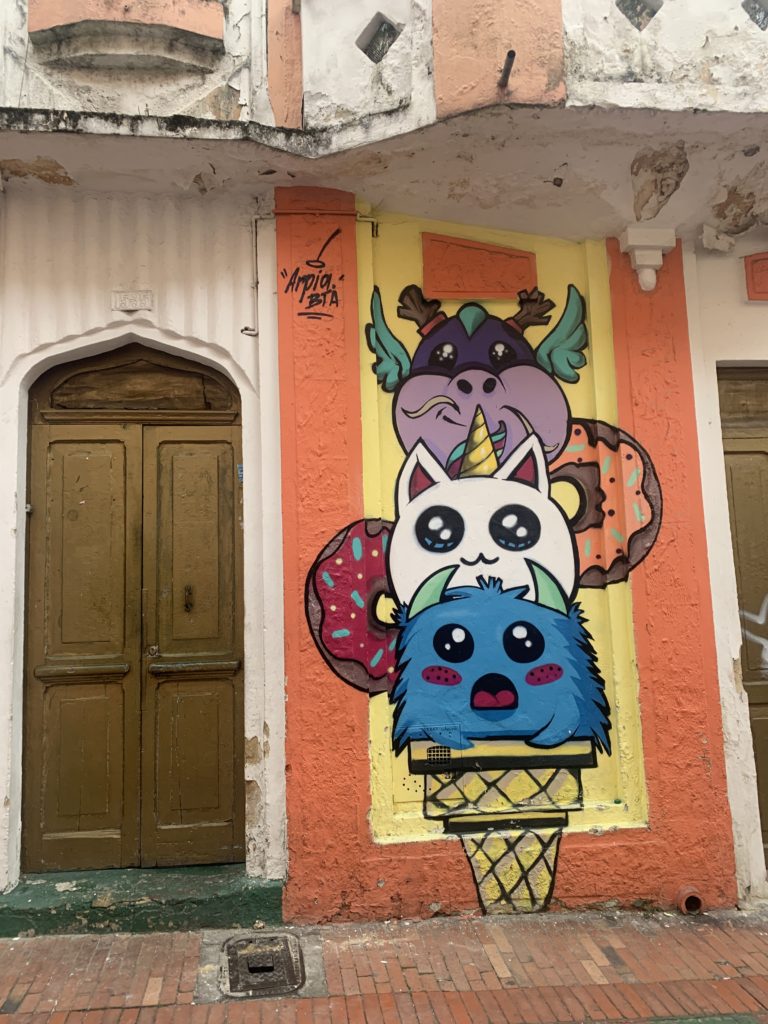
The tour took us around the Candelaria and downtown to see many of the bigger graffiti pieces and learn about the motivations and messages behind them. My guide, Jay, works as an organizer to promote this kind of art and did a great job showing us the significance of graffiti in Bogotá and around the world.
Overall, I found Bogotá to be vibrant and full of life, and the people to be kind, patient, and very welcoming. I loved that the people of Bogotá filled the public spaces of the city with laughter, food, and music. If you’re considering a trip to Colombia, I would not rule out Bogotá.
